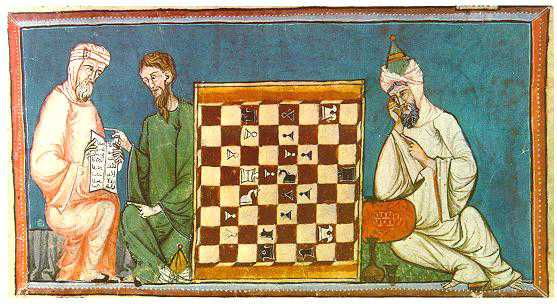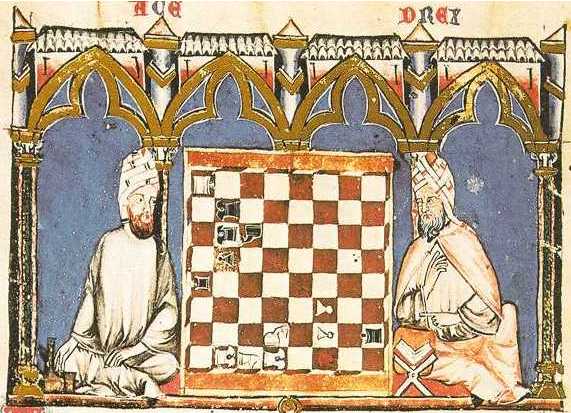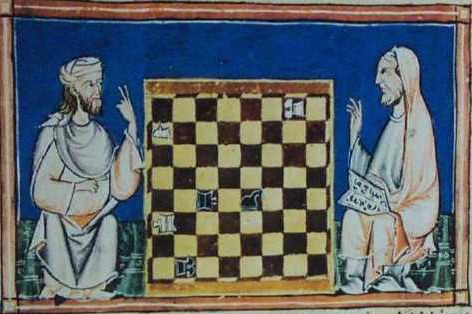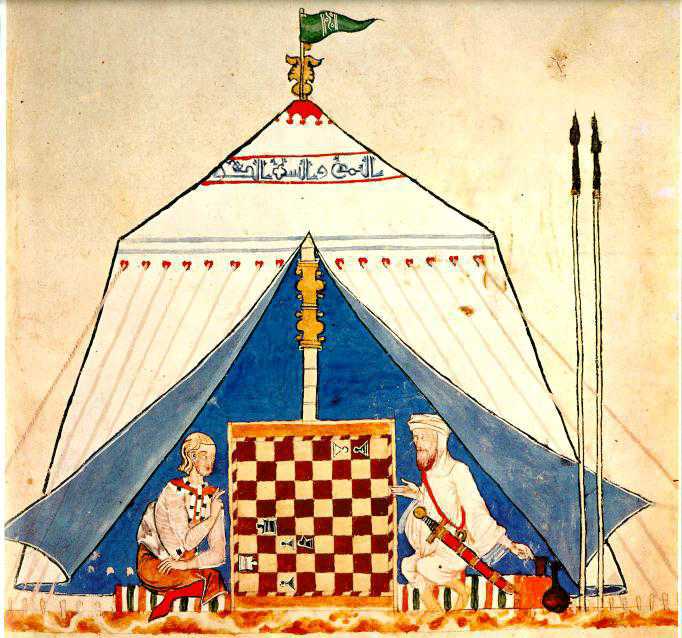Many of the women's garments are supported by later pictures from al-Andalus and the Maghrib.
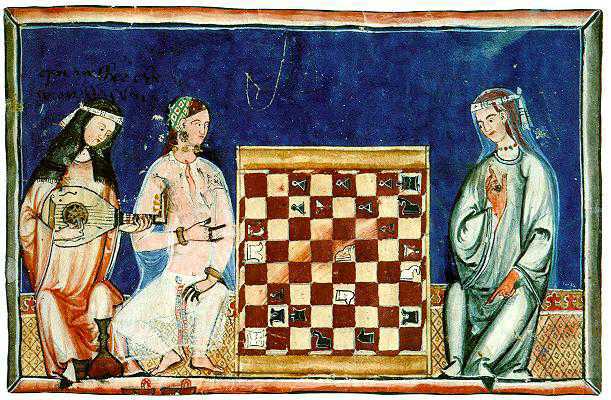 Three women are shown, two in tunics and one in a sheer chemise and "underpants". Two have henna'ed fingers and palms. Three women are shown, two in tunics and one in a sheer chemise and "underpants". Two have henna'ed fingers and palms.
Two of the women wear opaque tunics, one light blue, one pink. The tunics have round necklines and long sleeves with deep cuffs, while the hems are so long the garments pool over their feet. They appear to be made of a very supple fabric and are worn unbelted. Narrow black shoes or slippers with pointed toes appear to be poking beyond their hems. One woman wears a long sheer veil down to her waist that leaves her face unencumbered, held in place by a patterned filet, a short necklace of multicolored beads, and fully henna'ed hands. The other woman plays an oud. Her pink tunic is much like the light blue one. On her head is a dark woven cloth with stripes near its fringed ends, also held in place by a striped filet. Her hands appear to be un-henna'ed and she doesn't seem to be wearing jewelry.
The third woman wears a very sheer chemise. It has some kind of decoration on each shoulder (partially rubbed off on her right) and possibly some zig-zag decoration around the round neckline which is fastened by a thin tie at the center front. Her ankle-length sheer pants have a visible multi-colored drawstring dangling between her knees. On her head she wears a patterned kerchief or coif. She has a heavy gold bracelet on each wrist, and a necklace that appears to be made of gold balls. She also has large circular earrings.
 Two women, possibly from very devout Berber families or from east of the Maghrib, wear long opaque tunics devoid of ornamentation, white turbans, multi-layered facial veils, and sheer shoulder scarves with decorative bands and fringes at their ends. They wear delicate slippers on their feet. Two women, possibly from very devout Berber families or from east of the Maghrib, wear long opaque tunics devoid of ornamentation, white turbans, multi-layered facial veils, and sheer shoulder scarves with decorative bands and fringes at their ends. They wear delicate slippers on their feet.
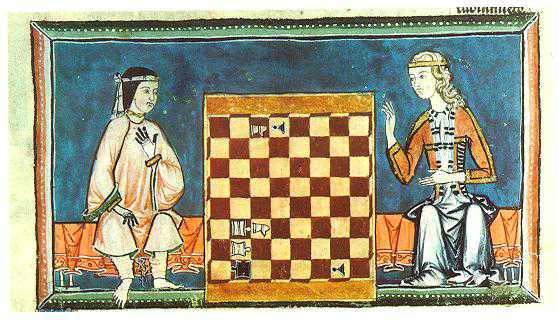 Here is a clear constrast between the costumes of Spanish Christian and Muslim Andalusian women. Here is a clear constrast between the costumes of Spanish Christian and Muslim Andalusian women.
The Christian Spanish woman wears a long-sleeved tight dress (cotehardie?) or tunic under what appears to be a pale blue sideless surcote trimmed with black and white striped edging. The red dress is decorated with gold bands around cuffs, up the length of the arms, and across the shoulders (there appears to be a band across the chest, too--there may be more but that's all that can be seen). A panel of black and white under her left arm may be lacing. She has a gold filet around her head while her long curly hair cascades down her back. Her overdress pools over her feet so that they cannot be seen.
The Andalusian wears a loose tunic with deep cuffs. While a line over her right shoulder seems to show a raglan seam, it probably just represents a fold in the fabric. There is no trim on the outside of the tunic, however, her right cuff appears to be folded back and seems to be lined with patterned fabric. The tunic is short enough that her "underpants" can be clearly seen gathered on her lower legs. Their drawstrings can be seen dangling between her legs. She, too, wears a filet around her head, which appears to be a woven band of some sort, with a bow over her right ear. She has a heavy gold bracelet on each wrist and a gold necklace. Her feet are bare. Her fingers, and likely her palms, are henna'ed.
| ![]()
![]()



